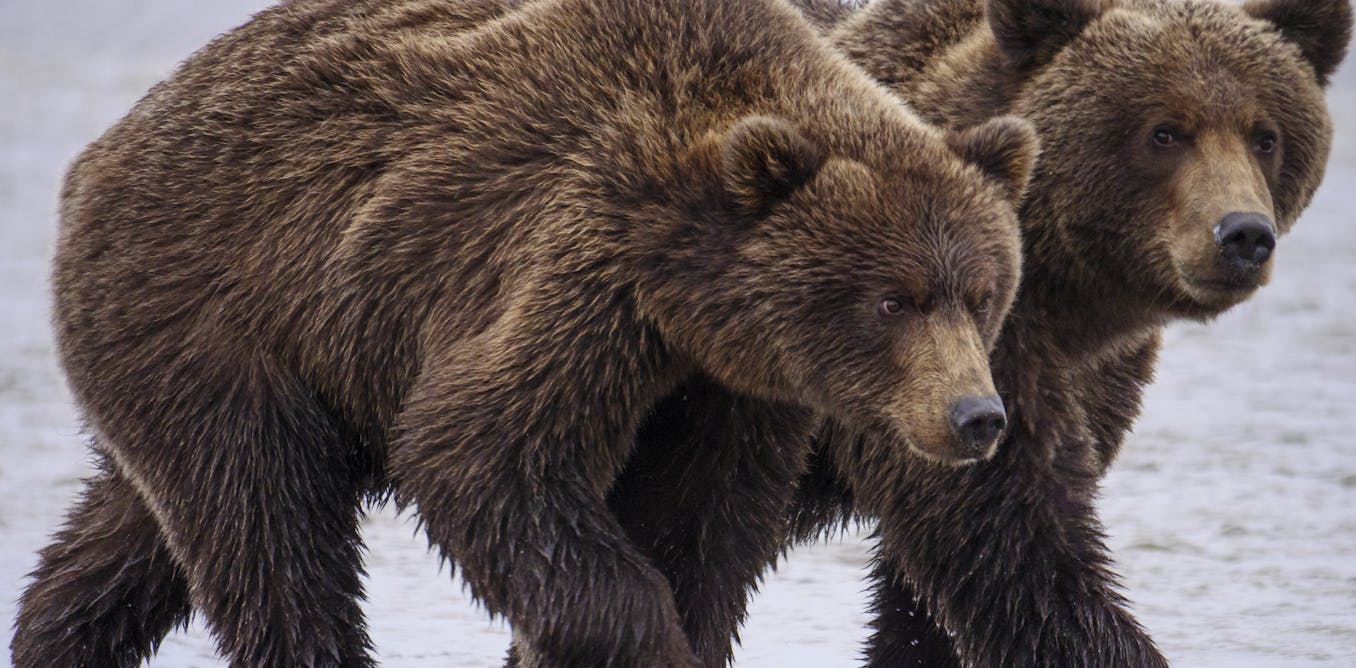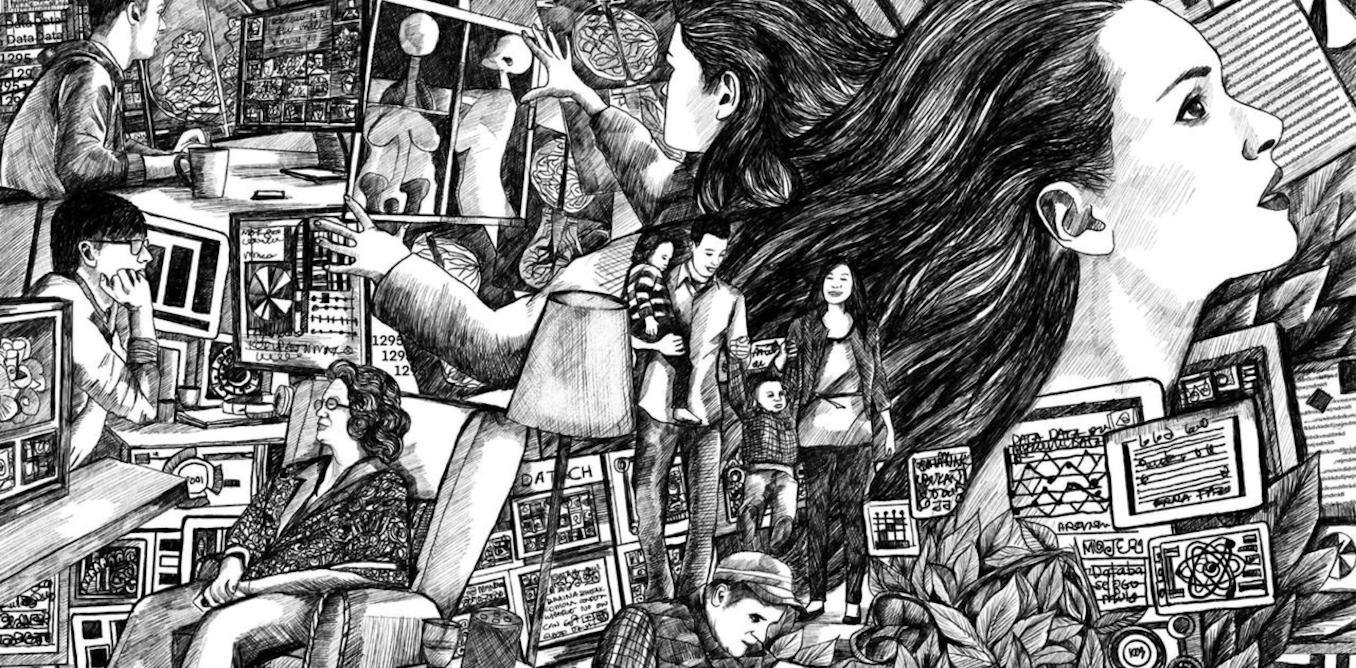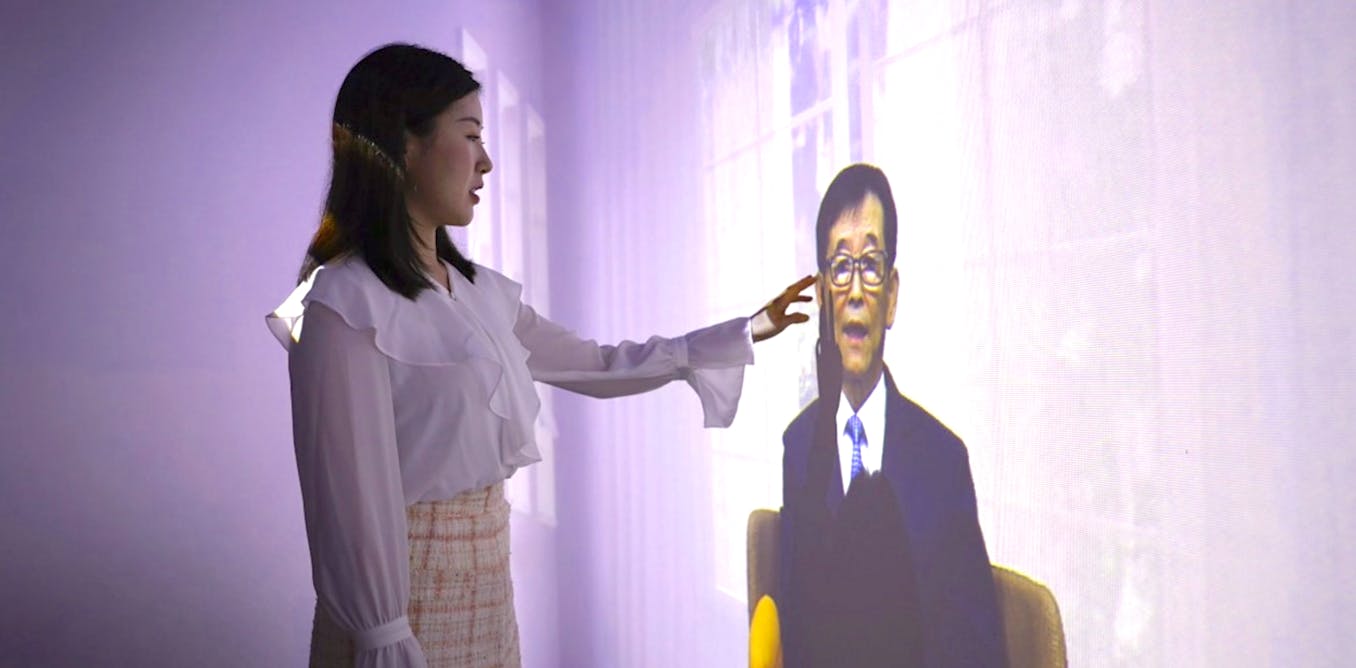An annular eclipse, sometimes known as a “ring of fire” eclipse, is taking place on October 2. It will be visible from Argentina and Chile, while a partial eclipse will be seen in parts of the Pacific, other parts of South America and from Antarctica.
Throughout history, eclipses have fascinated people. People around the world have
wondered about their significance and what causes them. Unsurprisingly, given their impressive nature, various mystical causes and effects have been attributed to eclipses over the centuries.
I’m going to provide more grounded answers to these questions. But as you’ll see, the answers often demand another question.
Why do eclipses happen?
The Earth goes around the Sun once per year in an orbit. The Moon goes around the Earth once per month in a smaller orbit. The Moon passes between us and the Sun, blocking out sunlight and casting a shadow on the Earth.
Oisin Creaner, Author provided (no reuse)
Why don’t eclipses happen every month?
The Moon’s path around the Earth is tilted with respect to the Earth’s path around the Sun. This means that, most of the time, the Moon passes either above or
below the Sun from our perspective, so it doesn’t block out any sunlight.

Oisin Creaner, Author provided (no reuse)
As the diagram above shows, the Moon orbits at an angle. Notice how the Moon’s shadow now misses the Earth.
What’s the difference between a total and a partial eclipse?
Because the Sun is bigger than the Moon, there’s only a small cone of full shadow
called the “umbra” in which the sun is fully blocked. This causes a total eclipse.
Outside the umbra is a much larger area called the “penumbra” where part of the
Sun is blocked, but part of it is visible. This causes a partial eclipse.
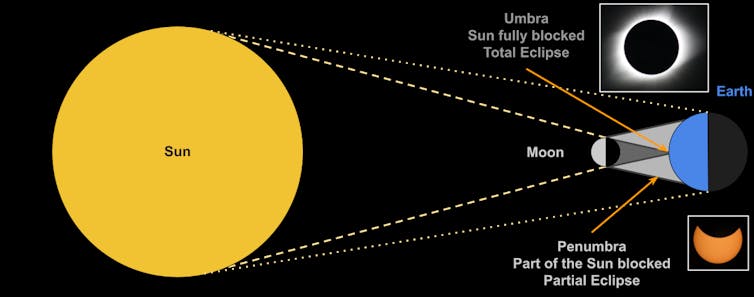
Oisin Creaner. Inset images: NASA/Nat Gopalswamy (2024) (total eclipse) Hinode/XRT (2024) (partial eclipse)
What’s special about a total eclipse?
A total eclipse of the Sun from Earth is pretty special because of a lucky
coincidence. The Sun is 400 times larger in diameter than the Moon, and the Sun is also about 400 times further away than the Moon.
This means that they appear to be about the same size, so if you get them lined up just right, the Moon can fully block out the Sun, with very little spare, allowing you to see the “corona” (meaning crown) of the Sun. We can use the patterns in the corona to study the Sun’s magnetic field, but that’s a story for another day.
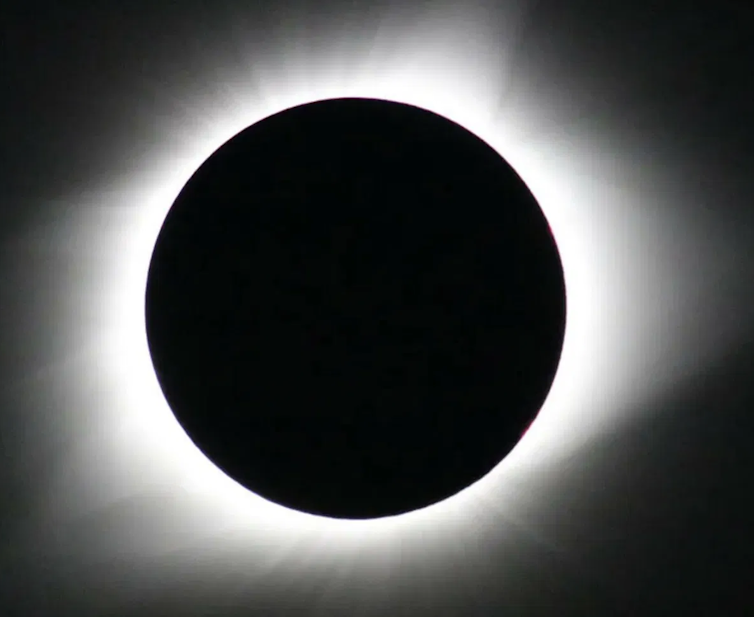
NASA/Nat Gopalswamy
What’s an annular eclipse?
An annular (meaning ring) eclipse is when the umbra doesn’t quite reach the Earth. This means that you can see part of the Sun peeking out around the Moon on all sides. This causes the Sun to appear as a ring around the dark shadow caused by the Moon.
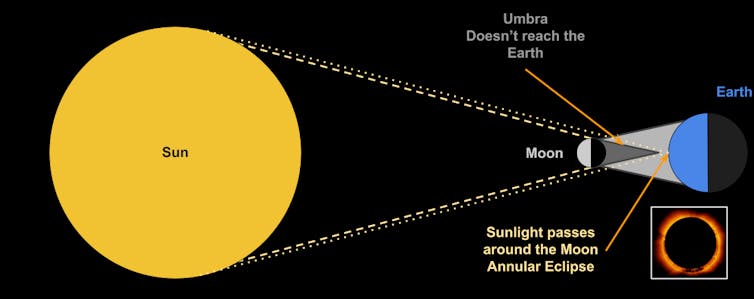
Oisin Creaner. Inset Image: NASA/Aubrey Gemignani (2024), Author provided (no reuse)
This happens because the orbit of the Moon isn’t a circle, it’s an ellipse (like an oval or
squashed circle). This means that the distance from the Earth to the Moon varies, so it seems to get bigger and smaller. At its closest point (perigee), the Moon
appears to be 14% bigger than when it’s at its furthest point (apogee).
The Earth’s orbit around the Sun is also elliptical, but the difference isn’t as large. Total eclipses happen when the Moon is close to Earth, and so can block out the whole Sun. Annular eclipses happen when the Moon is further away, and can’t completely cover it.
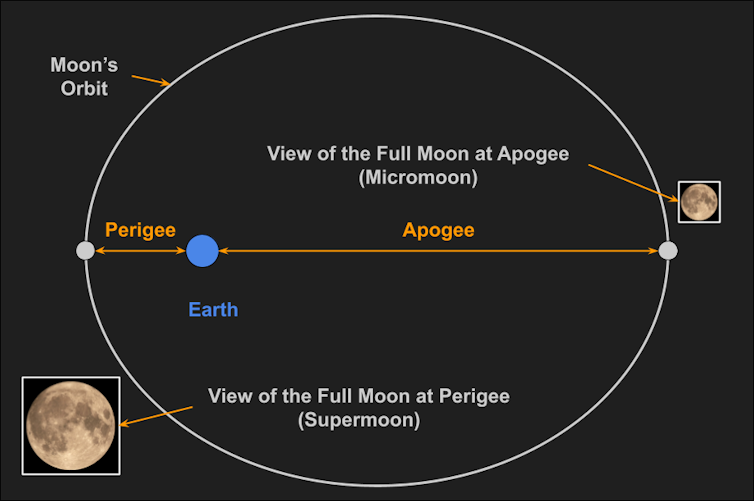
Oisin Creaner. Inset Images Tomruen (2016), CC BY-SA 4.0, via Wikimedia Commons.
The closer the Moon is to the Earth, the larger it appears to be. (The real effect is about 14% difference in size).
Eclipses happen in lots of places. Just as the Moon casts a shadow on the Earth, the Earth can cast a shadow on the Moon. We call that a lunar eclipse, because the Moon seems to go dark. Because the Earth is much bigger than the Moon, the entire Moon can be in the Earth’s umbra.
However, Earth’s atmosphere refracts (bends) some sunlight around the Earth so a little light, mostly red light, makes it through, causing the “blood moon” effect.
From the Moon, you’d see a total eclipse of the Sun. The Earth, would appear to be four times the size of the Sun (it’s actually about 100 times smaller in diameter), and would block out the Sun, except for a reddish halo of light. This halo would come from all the sunsets and sunrises happening around the world at once.
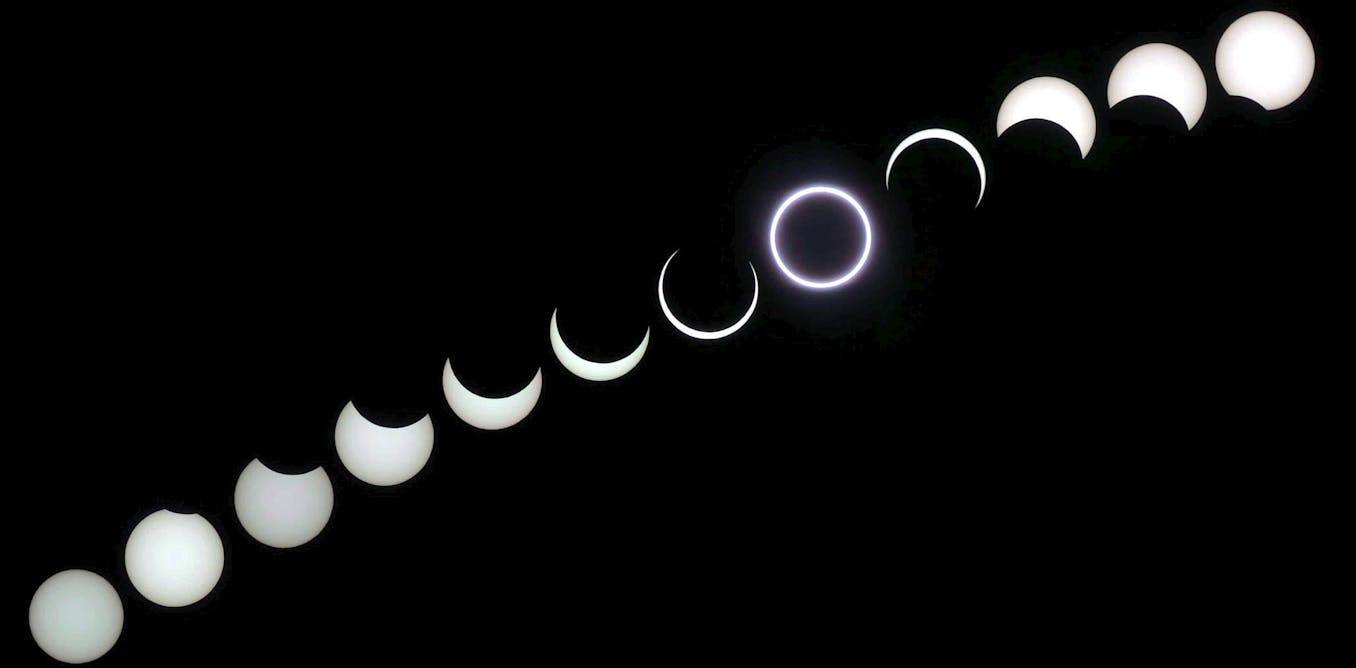
The post “A ‘ring of fire’ eclipse is taking place in South America and the Pacific. Here’s how eclipses happen” by Oisin Creaner, Assistant Professor of Physical Sciences, Dublin City University was published on 10/02/2024 by theconversation.com



